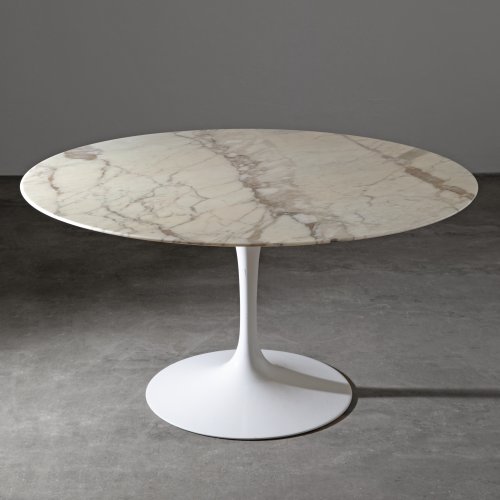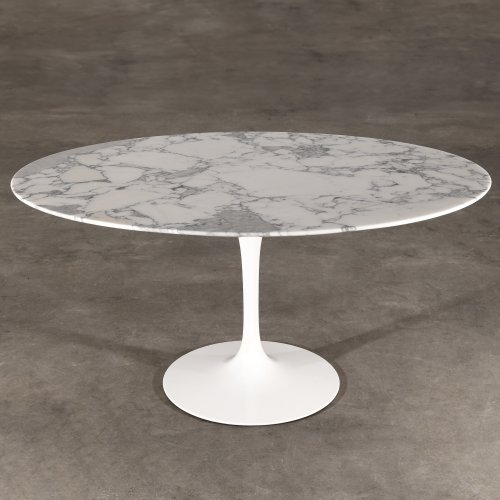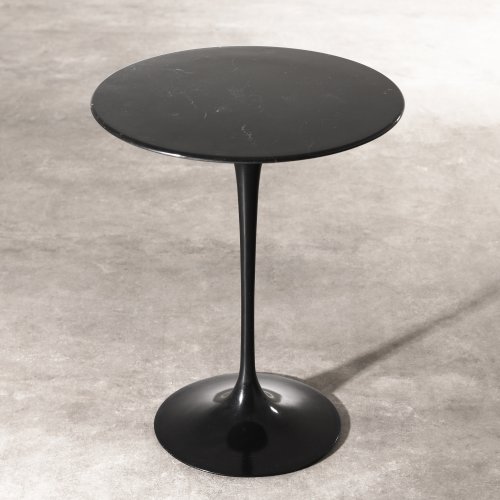Biography
Eero Saarinen is - not least as a result of his exchanges with Charles Eames- one of the most influential players in American furniture design from the 1940s to the 1960s .
The son of Eliel Saarinen, the famous Finnish architect and first president of the Cranbrook Academy of Art, and the sculptor and textile designer Lola Saarinen, initially studied sculpture at the Académie de la Grande Chaumière in Paris (1929-1930) until he finally transferred to Yale University in 1930 to study architecture. Thanks to a scholarship, he was given the opportunity to travel across Europe between 1934 and 1935. After his return, he worked in his father's architectural office and also taught at his professorial chair.
It was there that he met Charles Eames and, from 1937 onwards, experimented with him on new types of furniture, resulting in the first designs made of molded plywood. This collaboration eventually led to a series of innovative and award-winning furniture, including the design of the 'Organic Armchair', made of plywood, which won the Museum of Modern Art's 'Organic Design in Home Furnishings' competition in 1940.
Today, Saarinen's furniture designs for the Knoll International company are best known. They were created from 1941 onwards. Examples include the 'Grasshopper 60' armchair (1946-47) and the 'Womb chair 70' (1948). The latter represents one of the first postwar designs in seat shell aesthetics. Here, the individual elements of the chair are emphasized through a differentiation of material composition, texture and color. The 'Tulip Chair' (1956) also became a classic. With the so-called 'Pedestal Group', to which the chair belongs, the designer finally succeeded in tidying up the "wretched tangle of legs" in houses and apartments (Fiell 1997, p. 319) by attaching seat shells and tabletops to a single leg.
In contrast to the heavily decorated furniture of the early 1950s, Saarinen's designs rely on clean lines and a reduced formal language, which is why they remain timeless designs to this day. In addition to his career as a designer, Saarinen also worked in his father's architectural office until the latter’s death in 1950, after which he ran his own office called 'Eero Saarinen and Associates'. In this context, he designed a number of significant buildings in the USA. One of his largest architectural projects was his design of the TWA terminal at John F. Kennedy Airport in New York, which opened in 1962.
Carina Schlager, B.A.
Objects by Eero Saarinen
-

-
Sold

-

Eero Saarinen Knoll International
Sofa table / side table from the Tulip series
Estimate: 360 € - 800 €
Unsold lot
-
Sold

